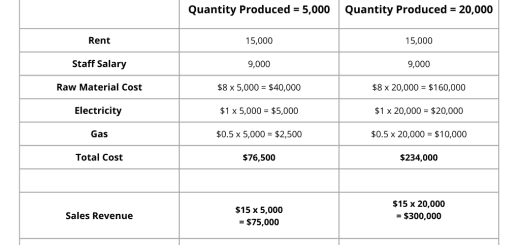Oligopoly Market – Definition, Types, Characteristics, Examples
- Definition of Oligopoly Market
- Examples of Oligopoly Market
- Types of Oligopoly Market
- Characteristics of Oligopoly Market
- How do Oligopolies Cause Market Failure (Negative Effects of an Oligopoly)
1. Definition of Oligopoly Market
An oligopoly market is a type of market structure where few firms have the entire market control. These few firms have the capability to decide the entire prices and supply of the market on a collaborative basis. But they don’t have the capacity to influence the market on their own.
The market share which individual firms have can vary from little as 5% to more than 50%. Despite the individual market share each firm has, an oligopoly market is where they have the collective power to dictate price, supply, and demand.
2. Examples of Oligopoly Market
i) Mass Media Industry in the USA
In the first two decades of the 21st century, the mass media industry in America was an example of an oligopoly, with the ownership of the majority share of the industry owned by just a few corporations,
- CBS
- Time Warner
- General Electric (GE)
- News Corporation
- Walt Disney
- Viacom
You may refer to the below article published by BusinessInsider.com for more information,
6 Corporations Control 90% Of The Media In America
ii) Computer Operating Systems in the USA
The computer operating system market in the USA and world was dominated by four players,
- Microsoft (owner more than 50% of market share)
- Apple
- Linux
Four players dominate the entire market share of computer operating systems.
You may refer to the below article published by StatCounter.com for more information,
Desktop Operating System Market Share United States Of America
iii) Mobile Network Operator Market in the USAg market in the USA
There are only a few companies established in the mobile network operating market in the USA.
- AT&T
- Sprint
- T-Mobile
- Verizon
- U.S. Cellular
- Cellcom
The country’s biggest cellphone providers T-Mobile and Sprint merged together in 2018. Industry analysts aren’t optimistic about the promised lower prices, due to the oligopoly created with this merger. Please refer to the below article for more information on this merger,
How the T-Mobile and Sprint merger could impact consumers – Published By Abcnews.go.com
Please refer to the Below Article for Another Five Real Examples of Oligopoly Market in the USA and Canada,
Real Examples of Oligopoly Market in the USA & Canada
3. Types of Oligopoly Market
There are 10 Types of Oligopoly Markets Applicable as Follows,
i) Perfect (Pure) Oligopoly
If the products produced by firms in the market are homogeneous the oligopoly is set to be pure or perfect. Oligopoly is named as pure or perfect oligopoly if the firms produce products of the same kind or nature. This is an oligopoly type based on product differentiation.
ii) Imperfect (Differentiated) Oligopoly
If the products produced by firms in the market are heterogeneous the oligopoly is set to be imperfect or differentiated. Oligopoly is named as imperfect or differentiated oligopoly if the firms produce dissimilar or diverse products. This is an oligopoly type based on product differentiation.
iii) Open Oligopoly
In an open oligopoly, new firms have the freedom to enter into the industry. New firms can join the market and compete with existing firms. An open oligopoly provides no restriction for the desiring firms to enter the market. This is an oligopoly type based on the entry of firms.
iv) Closed Oligopoly
Entry of the new entrants is restricted in the closed oligopoly. Entry of new firms to the market is strictly banned. Only a few established firms control the entire market and new firms are not allowed to enter the industry. The closed oligopoly is the opposite of an open oligopoly. This is an oligopoly type based on the entry of firms.
v) Collusive Oligopoly
In a collusive oligopoly market, firms collaborate to decide the price and the output of the products. This occurs when firms cooperate to a common policy of the price and products. Simply, firms combine to evade the competition of themselves. This is an oligopoly type based on product differentiation.
vi) Competitive (Non-Collusive or Non-Cooperative) Oligopoly
Competitive oligopoly occurs when there is a lack of understanding between the firms and they create invariable competition. This is also known as a non-collusive or non-cooperative oligopoly. There is no agreement among the firms regarding the price and output of the entire market. Firms act independently in a competitive (non-collusive or non-cooperative) oligopoly. This is an oligopoly type based on product differentiation.
vii) Partial Oligopoly
Partial oligopoly emerges when one big firm dominates the industry and this firm is the price leader. Other firms follow the big firm in deciding the price policy. This is an oligopoly type based on price leadership.
viii) Full Oligopoly
Full (Total) oligopoly occurs when there is no price leadership in the market. It is the opposite of partial oligopoly and none of the firms dominates the market. There is no price leadership setter in the market. This is an oligopoly type based on price leadership.
ix) Syndicated Oligopoly
A syndicated oligopoly is when the firms come together and sell their products with a common interest (centralized syndicate). This is an oligopoly type that depends on how the firms coordinate with each other.
x) Organized Oligopoly
An organized oligopoly is where the firms have a central association for fixing the prices, outputs, and quotas. There is a central association formed to fix prices, quotas, and output.
4. Characteristics of Oligopoly Market
There are seven main characteristics of a market that can identify it as an oligopoly. These can be treated as conditions to enable oligopoly.
i) Heightened Barriers to Entry
Markets with oligopolies naturally have several barriers to entry. As an example, patents, licenses, high start-up costs, etc. These make it difficult for new entrants to join the competition.
ii) Each Firm Has Minor Own Market Power
In an oligopoly market, each firm has little market power. As an example, if a firm in an oligopolistic market raises its price then there is a risk of losing customers to other competitors. One oligopolistic firm cannot dictate prices independently.
iii) Pricing Unique Pattern Not Available
In an oligopoly market, each firm is keen to remain independent and to get the maximum possible profit. They react to the price-output movements of one another which are a continuous element of uncertainty.
iv) Few Firms with Large Market Share
In an oligopoly market, it may have many sellers, but the top 5 firms have a combined market share of over 50 percent. This is because the market power is concentrated between a few top firms.
v) Inter Dependency Between Firms
In an oligopoly market, any action taken on one film will strongly affect the actions of its competitors (other firms). An oligopolistic firm operates based on competitor actions. If one firm reduces prices, other firms will also tend to follow the same to safeguard their market share.
vi) Higher Prices than Perfect Competition
Firms in an oligopoly market have combined market power, which all firms usually tend to keep prices higher to obtain larger profits. If any firms reduce prices, others would also follow.
vii) Efficiency
Firms in an oligopoly market benefit from high levels of market share which they naturally benefit from economies of scale. Firms can the product at a lower cost.
5. Importance of Oligopoly
Firms see more economic advantages in collaborating with the competitors on a specific price rather than reducing prices to challenge their competitors. By this kind of collaborative price control, oligopolies can raise their barriers to entry.
5. How do Oligopolies Cause Market Failure (Negative Effects of an Oligopoly)
Oligopoly cause market failure in the following ways,
i) Interdependence
Firms strongly depend on each other in an oligopoly market. If one firm reduces the price then other firms will also do the same to retain their customers. But this has negative effects where any of the firms could not obtain a profit due to the price reduction war. This may result in a collapse of some firms in the market, which may result in a monopoly situation.
ii) Inefficiency
Firms in an oligopoly market benefit from high levels of market share which they naturally benefit from economies of scale. But this could result in diseconomies of scale as well.
iii) Less Room For New Entrants
Markets with oligopolies naturally have several barriers to entry. As an example, patents, licenses, high start-up costs, etc. These make it difficult for new entrants to join the competition. This will not be a healthy situation for the markets in the long run.
Read More:
Market Structures
Oligopoly Market
- Real Examples of Oligopoly Market (in the USA, Canada, World)
- Seven Important Characteristics of Oligopoly Market
- Advantages and Disadvantages of Oligopoly Market
Monopoly Market
- Definition, Examples, and Characteristics of Monopoly Market
- Real Examples of Monopoly Market (in the USA, Canada, Australia, World)
- Important Characteristics / Causes of Monopoly Market
- Advantages and Disadvantages of Monopoly Market
Monopolistic Competition
- Overview, Definition, & Features of Monopolistic Competition
- Main Characteristics / Causes of Monopolistic Competition
- Real Examples of Monopolistic Competition (in USA, Canada, World)
- Advantages and Disadvantages of Monopolistic Competition
Perfect Competition


